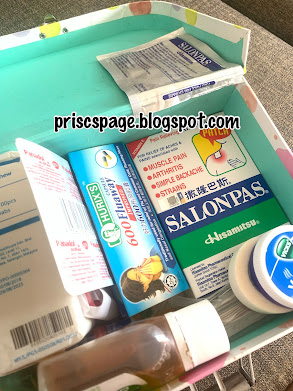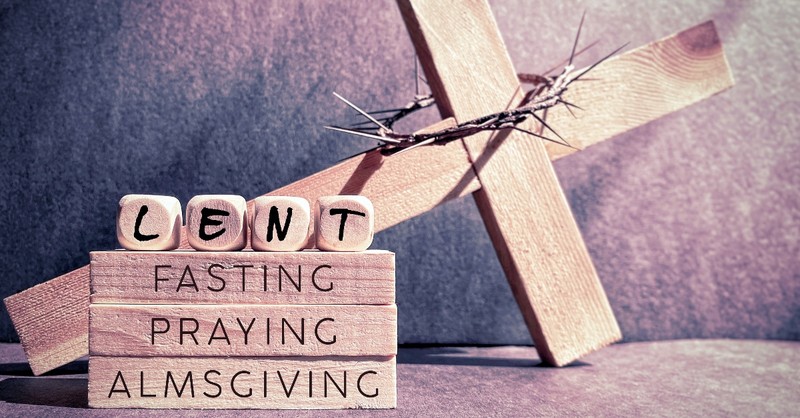I'm taking mandatory leave days off work and flew back to my hometown to unwind and rest.
Work has been quite demanding, not so much on the workload, although on some days, it can get intense from this perspective too, but more so on the expectations and social interactions that I have had to deal with. As a millennial sandwiched in between the conventional Boomers and Gen X, and the revolutionary Gen Z, I tend to be in a limbo state where I can see both sides of the coins but have to eventually pick a side to move on.
But wait....
That's not what this post is about.
That was just my random rambling about some of the tough days I have to go through.
And guess what?
I think it's fine to acknowledge both the good and bad days every once in a while.
More importantly, I'm just feeling good right now that I'm slowly going back to writing a blog post again after months of procrastinating doing something I know I enjoy.
I was always in the mindset that makes me stuck in an all-or-nothing mode. For the longest time, I've been telling myself that if this is my natural tendency, I might as well just accept it and go with the flow. To a certain extent, going with the flow is a feasible strategy but it shouldn't continue for a long period of time because it limits us of our actual potentials. I initially thought that going with the flow is the least damaging method to keep moving forward, but I've learned that it actually makes my movement stagnant instead.
Like a beacon of hope, I came across a self-help book entitled 'Atomic Habits' written by James Clear, first published in the United Kingdom in 2018.
It was a fine Tuesday afternoon when I followed my younger siblings to a mall for a movie and we stopped by a bookstore. My subconscious mind triggered an extra dose of dopamine as I stepped my foot into the store. I used to read regularly when I was a teenager and young adult. I stopped my reading habit when I became caught up in my full-time job that made me move to another city. Having to adjust and catch up with independent adulthood, I gradually strayed away from my interest in reading and writing. Those who knew me during my childhood or adolescence would remember me as someone studious and diligent. Ironically, those who knew me during my adulthood would see me as someone outgoing and happy-go-lucky. When I think about both versions of me, I can testify that both are the real me. They may seem like different individuals, but they are existing components of my real personality and tendencies. Now, I'm able to understand myself better after reading 'Atomic Habits' which points out how habits lead to performances, supported by the Four Laws of Behaviour Change - cue, craving, response, reward.
I would recommend reading the whole book to get a clearer picture along with supporting theories and studies behind it.
For my non-reader blog visitors who do not prefer to spend money and time on a book, here I summarise the key lessons I've learned from the book (Believe me, I've literally highlighted and taped the parts that I find informative and interesting in the book.), which I believe will help us shape our habits to realign with the identity of who we want to become.
1) Focus on systems instead of goals.
Quoting chapter 1 of 'Atomic Habits' - The Surprising Power of Atomic Habits, goals are about the results you want to achieve, whereby systems are about the processes that lead to those results.
If we think about it objectively, achieving a goal is only a momentary gain. Once a particular goal is completed, we would typically stop the routine that led to the goal and fall back to our old habits. Instead of focusing on goals, why not focus on implementing a system of continuous small improvements? This will more likely make a habit long-lasting and automatic because it virtually has no ending.
2) Use implementation intention.
In order to make a desired habit specific and realistic, tie it to a time and place.
Instead of "I will go for a jog today", specify it with "I will jog at 6:00 PM today at Flowerpower Community Park."
Instead of "I will write a blog post", specify it with "I will write a blog post on writing tips at 8:30 PM today in my study room."
3) Use habit stacking combined with temptation bundling.
Human behaviour studies suggest that we tend to decide what to do next based on what we have just finished doing. Each action becomes a trigger to the next action. The people in the behavioural science field calls this the Diderot Effect. We can take advantage of this human tendency by attaching a desired new habit to an existing habit. The familiarity of a current habit helps to increase the likeliness of a new habit to occur if paired with each other.
An even better approach is to combine habit stacking with temptation bundling. Temptation bundling refers to linking an action you want to do with an action you need to do. By doing this, it makes the action more attractive even if we don't necessarily desire to do it because we have linked it to a reward in the form of a desired action.
For instance, if you are a coffee-lover (like me) and would like to practise daily meditation, you can pair drinking coffee with meditating. "After I meditate for 10 minutes, I will make and drink my morning coffee."
4) The first two minutes should be easy.
When starting a new habit, make it as easy as possible. Do not overwhelm yourself with the big end goal. The rule of thumb is that the first two minutes of doing that action should be easy. Almost every habit can be broken down into a two-minute starting point.
"Read a book" can become "Read one page".
"Run five laps" can become "Put on running shoes".
"Fold the clean laundry" can become "Fold a t-shirt".
"Do a set of workouts" can become "Spread out workout mat."
5) Create a commitment device.
As explained in chapter 14 of 'Atomic Habits' - How to Make Good Habits Inevitable and Bad Habits Impossible, a commitment device is a choice we make in the present that will control our actions in the future. It 'locks in' future behaviour that can bind us to a good habit and refrain us from a bad one. This helps to make good intentions more accessible and bad temptations more distant.
Examples of one-time actions that can lock in good habits are using small plates to control calorie intakes, muting notifications to reduce mindless social media scrolling, activating auto-debit payments to accumulate savings, or moving to a friendly neighbourhood to improve social skills.
6) Experiment through explore-exploit trade-off.
When venturing into a new goal or target, it is a better approach to try out several possible methods in the initial stage and decide to focus on the best method after the early period of exploration. While implementing the best available method, keep experimenting with new and innovative alternatives occasionally along the way. If the tested method helps you to win, keep exploiting it. If the tested method makes you lose, keep exploring for new methods.
7) Know our own talents and tendencies.
Ask these questions:
What feels fun to me?
What keeps me "in the zone"?
Where do I get greater returns?
What comes naturally to me?
(Questions quoted from chapter 18 of 'Atomic Habits' - The Truth About Talent.)
8) Follow the Goldilocks Rule.
Chapter 19 of 'Atomic Habits' - The Goldilocks Rule: How to Stay Motivated in Life and Work states that humans experience peak motivation when working on tasks that are right on the edge of their current abilities. This means that we are the most motivated when we do something that is just right; not too hard, not too easy.
When starting a habit, it is important to make it as easy as possible to help it stick as a routine. Once the routine is established as an automatic action, it is vital to advance it to the next level to keep us engaged. Scientists have suggested that a task must be roughly 4% more advanced than our current abilities to keep it interesting.
As the author James Clear stated, the greatest threat to success is not failure but boredom.
9) Review and refine habits regularly.
Career Best Effort (CBE) is a formula used to quantify the progress of one's performance, created by Pat Riley, former head coach of Los Angeles' basketball team Lakers.
CBE calculates to decimal value of small actions and deeds during the period of performing a job, goal, or function. For example, if the goal is to lose weight, positive points are given to actions such as completing a daily workout, drinking plain water, or eating fruits, while negative points are given to contradicting actions such as drinking soda, eating fried chicken, or going to bed after midnight. The pre-determined time in this case can be one day, which converts to 24 hours, or 1,440 minutes. The CBE is calculated by adding all positive points throughout the day based on their frequencies (one action equals to one point), subtracting all negative points in the same day, then divide the value by the time in minutes.
Say on this day, you have completed your morning workout 1 time before work, drank plain water in 6 times, ate fruits during lunch and dinner summing to 2 times, at fried chicken during dinner 1 time, and drank soda in the evening 1 time.
Your CBE for this day is equal to
[(Positive points minus negative points)] divided by total time in minutes
= [(1+6+2) - (1+1)] / 1,440
= (9 - 2) / 1,440
= 7 / 1,440
= 0.00486
After taking out the integer before the decimal point and the preceding zeros right after the decimal point, 486 is your CBE point.
The aim is to improve by 1% in your next attempt at your goal. So, on the next day, you should try to get at least 487 as your CBE point.
10) Be flexible.
Nothing is really permanent over time. Because of this, it is important to be flexible with your perspectives and way of living. Have your own identity but keep each component 'small' so that no part of your identity overpowers the other parts of you as a person.
Overall, I enjoyed reading this book.
It is factual and practical. It makes me want to become a better me for real, not just as an idea.



